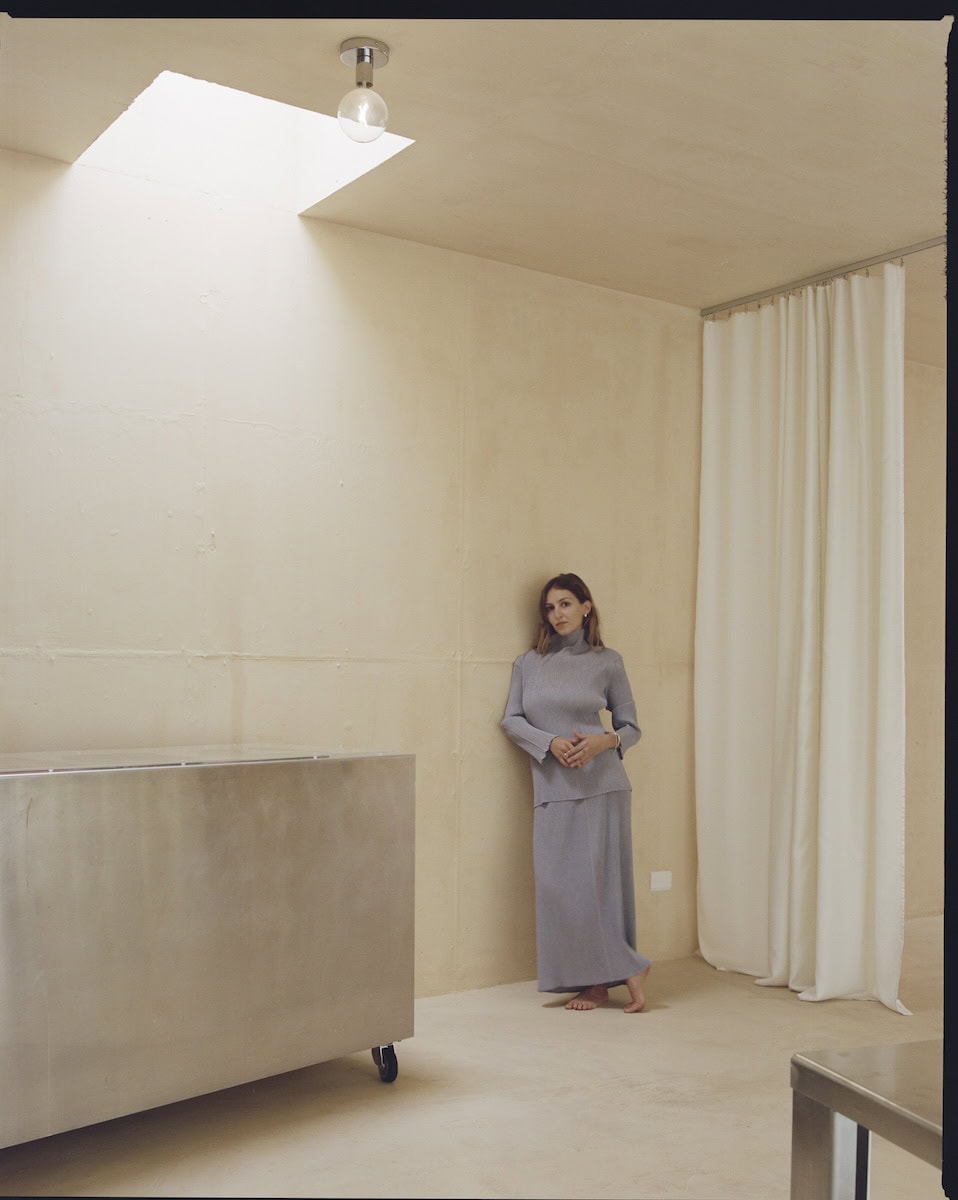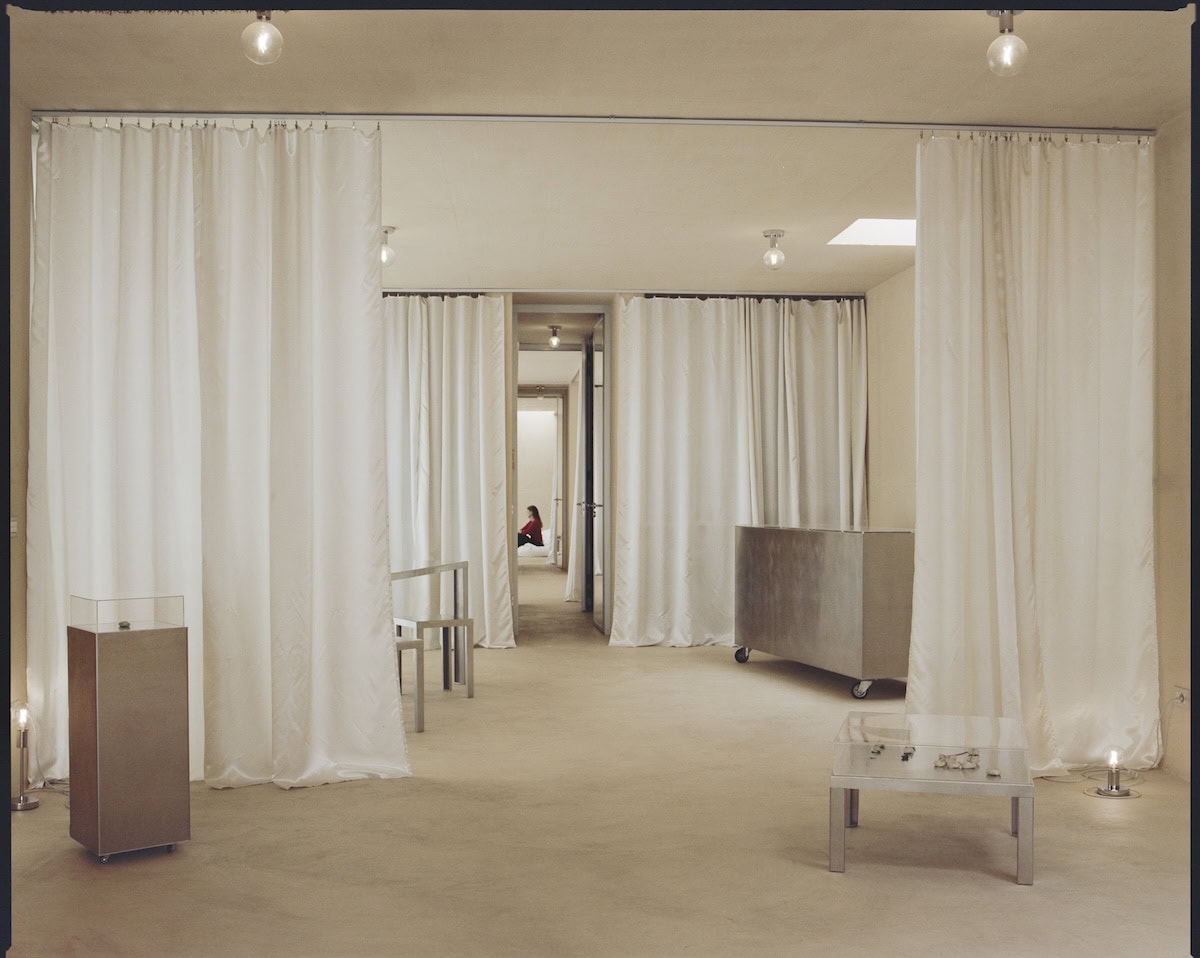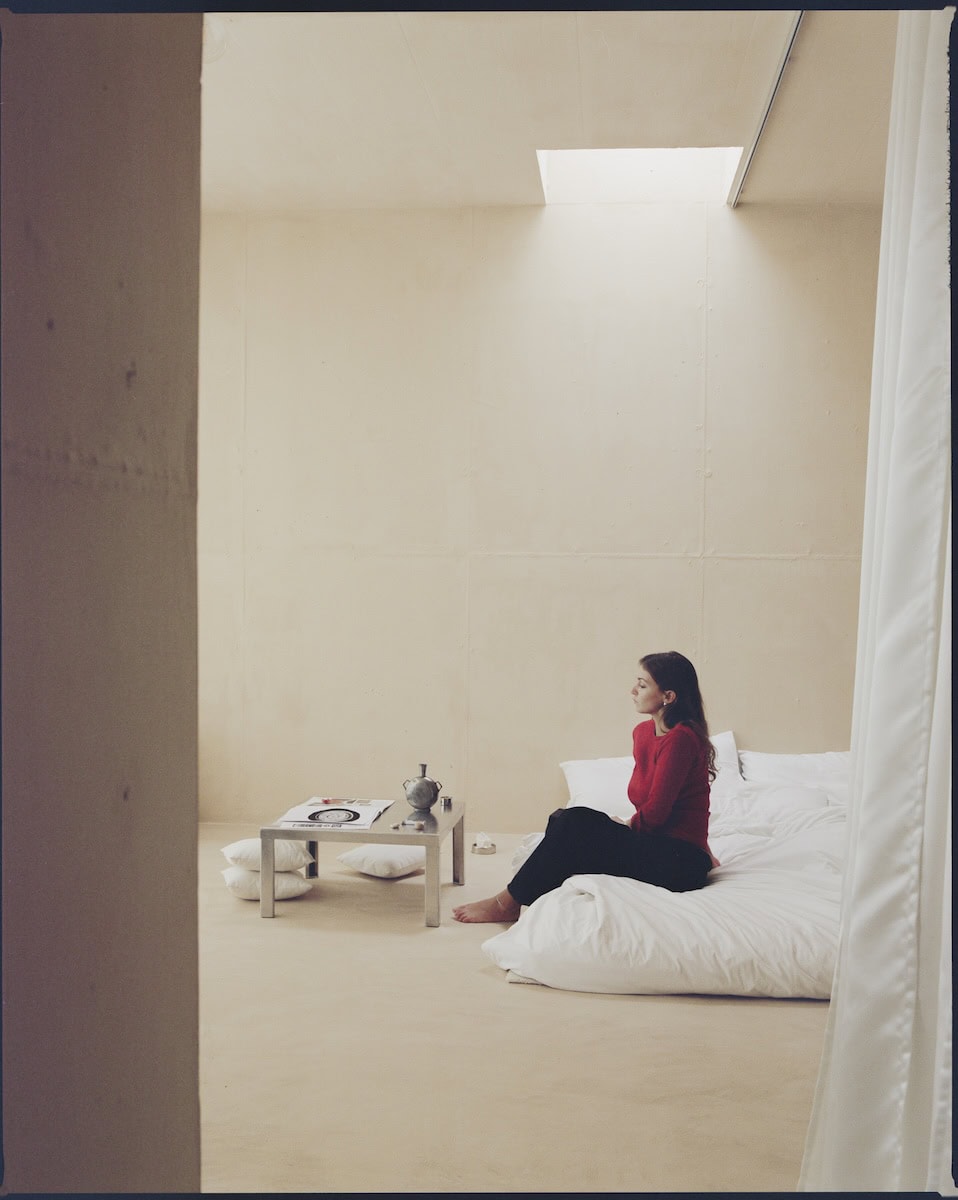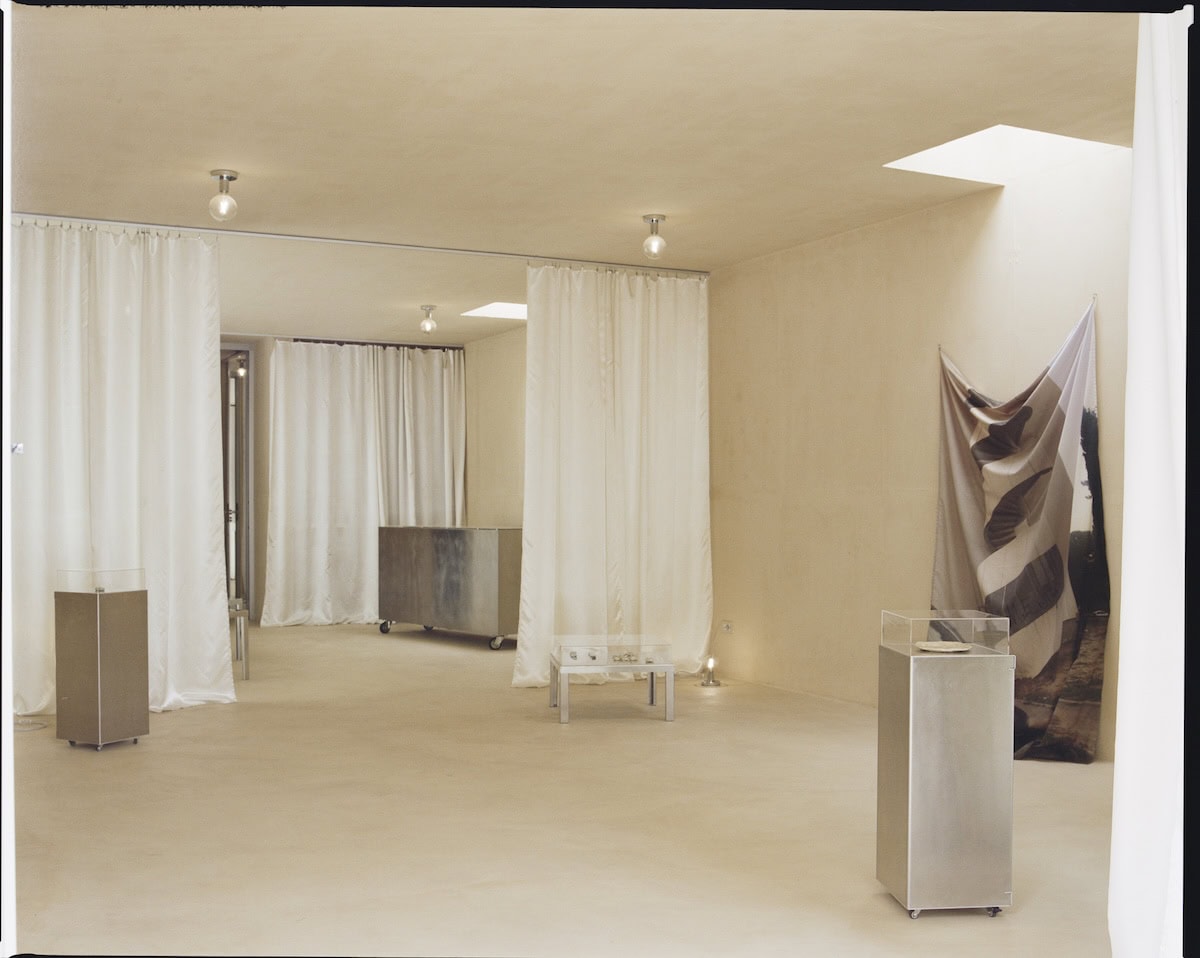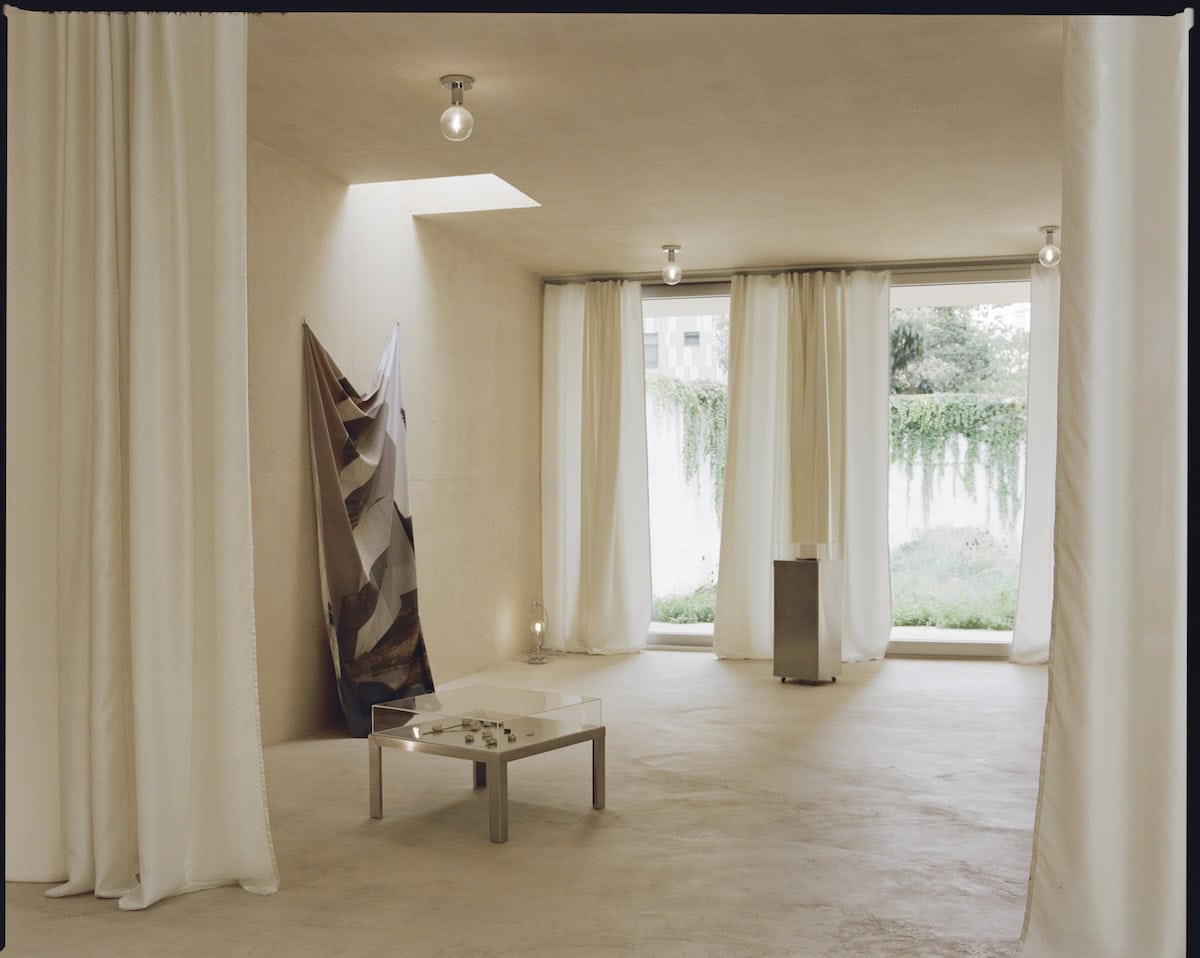Ilaria Sponda: Villa Clea presents itself as an anti-programmatic house, a multifunctional loft for living and art showcasing. Where does this project take inspiration from?
Allina & Matteo Corbellini: Villa Clea is a private house project first. After living in Belgium for a while we were looking to re-establish in Milan. During a previous residency in the city we started looking for places where to build our project and we found an ex-industrial site close to Fondazione Prada and ICA. We were convinced by the vibrancy of the location and the possibility to build a space from scratch in such an urban context. Our impellent need was to re-create a community of like-minded people in the city so here’s why we thought of turning the house into an art space too where to host artists and their art, collectors and people from the neighbourhood. As a cultural association dedicated to art, profit and nonprofit activities make this a sustainable project enhancing young collectors’ understanding of contemporary collecting and the neighbours’ involvement in living all matter artistic and cultural within the premises of our house.
IS: Matteo, you’re the architect behind this project. What is that makes the place so peculiar?
MC: Villa Clea stands as a single material monolith surrounded by a curtain of Milanese buildings, which act as a sort of theatrical backdrop around it. The building replaces the remains of an abandoned car workshop. Villa Clea is composed of a single mixture of clay and cement, serving as the structure, thermal and acoustic insulation, and cladding. This heterogeneity within the homogeneity allows to amplify the perception and gives a human and real dimension to the architecture, which thus remains in its totality while leaving its parts observable. The materials are carefully selected to complement the lime and clay mixture that forms the essence of the house, such as the raw aluminium for all furnitures and the raw cotton for mattresses and sofas.
IS: Why name it ‘Villa Clea’?
MC: The name ‘Clea’ phonetically links to the word ‘clay’, which is essentially a bonding material, as ‘gluten’, both words including a similar sound. Villa Clea is meant to be a glue for creative people–architects, designers, artists, collectors, curators etc.– while keeping its domestic nature. The spatial fluidity of living and exhibiting is realized through three independent lofts that can be unified to form a singular sensory promenade. The tangible architectural material of concrete is contrasted with the flow of luminous curtains and the incorporation of fully mirrored doors. A garden, born from the demolition of an old industrial oven, now hosts a Mediterranean micro-forest, and the flat roof embraces the rusticity of a wild meadow. The spatial essentiality of Villa Clea is complemented by an equally sensorial clarity in the interior setting, imagined Allina as an atmospheric installation that adapts to different ways of inhabiting the spaces. Each element is designed to fit in with the space with tactile-sensory discretion. Villa Clea presents itself as a contemporary living system capable of accommodating the multifaceted aspects of contemporary life: home, work, exhibition space, and place to stay. The fluidity of spaces reflects the versatility of life in this historical moment, while also reconnecting us to a timeless existential experience.
IS: Relic is the first exhibition opening to the public. Who’s the artist and what narrative have you constructed through your domestic space?
A: Relic is the first space activation we’ve brought to the public. It’s an intimate narration of studies by New York-based artist Andrea Smith. I invited Andrea to inhabit the house and bring a part of her intimacy into the spaces. She chose to gather some personal relics and display them in transparent cases. Each relic brings us back to her individuality and prompts us to question our own, leading us to reflect on the meaning that symbols, memories, and rituals might have in the diverse contemporary community. Two large fabrics rise from the floor upwards, capturing moments the artist interprets as allusions to a sense of ascension. Echos of the artist’s footsteps walk us through the second room, and through various cities, villages, cobblestones: a multitude of cultural references that perhaps also remind us of our infinite genetic interweavings. Entering the last room, glimpsed from the entrance through the series of mirrored doors, we encounter the artist’s most intimate space with her bed and the mementos of her emotional objects: notes, collected books, a small inherited icon, … Her room, which is both familiar and foreign to us, takes us back to the rooms of our childhood, of our past lives, of those of our ancestors, and of the generations to come. Each with its own intimate, collective relics.
IS: How do you select artists for the residency?
A: Each time I invite one artist as a form of art research itself. The willingness to connect personally with each artist and welcome them in a community bounded by art is what drives me.
IS: Generally speaking, Italian artists seem to be a bit concerned about exhibiting in hybrid spaces where fashion or design mingle with art and attract a public that’s not merely working in the ‘pure’ arts sector. How’s your feeling about this thought of mine? Have you found the same situation in Belgium?
A&MC: The Italian art system definitely limits artists in pushing themselves into hybrid situations and premises, where the space is not solely a white cube or art-people-oriented. This causes artists to worry about where their art is shown, as the placement in a not-so-canonical art space would be fatal and would make the art sector players think they’re not completely artists. Otherwise, during our professional experience in Belgium, we’ve seen artists closely collaborating with architects and designers to work on client’s projects, as the artist is considered part of a wider ecosystem of creatives. Through Villa Clea we’d like to support the idea that contemporary art is part of the everyday life, of the domestic and intimate side of the ordinary.
